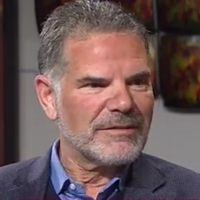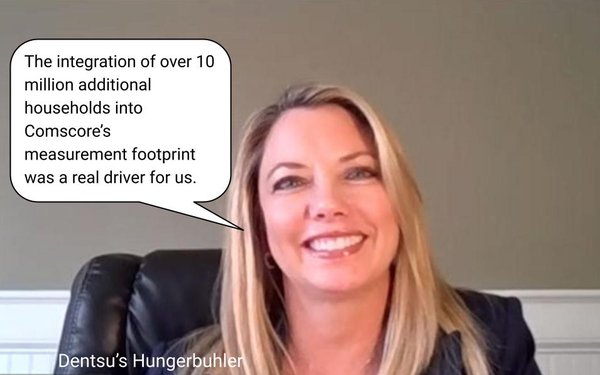Flat is the new up when it comes to spot TV revenue in 2023. Without political advertising to buoy broadcaster’s results, and auto still in the doldrums, station groups should consider it a win if they avoid spot TV revenues declining next year, which they could do by as much as 5%, station group executives and industry observers predict.
“In markets without political, I think flat is a good story [because] we don’t think core gets back to 2019 levels until 2025,” says one broadcast ad sales executive. “Overall, I think people need to get really comfortable with group-wide numbers that are flat to down 4% for 2023.”
But first, to focus on the good news.
 Political is up and final tallies are far from in. The true political spending does not begin until next month when stations in such large markets as Atlanta, Los Angeles, Phoenix, New York City and Philadelphia, and smaller ones such as Topeka, Kan.; Juneau, Ala., and more should see a frenzy of spending as candidates battle it out in hard-fought, divisive races.
Political is up and final tallies are far from in. The true political spending does not begin until next month when stations in such large markets as Atlanta, Los Angeles, Phoenix, New York City and Philadelphia, and smaller ones such as Topeka, Kan.; Juneau, Ala., and more should see a frenzy of spending as candidates battle it out in hard-fought, divisive races.
“Political is going to be a record-setting year and for some broadcasters it will rival 2020 based on their location, stations and competitive races,” says Steve Lanzano, president and CEO, TVB.
Estimates for total political spending in 2022 range from Kantar’s $8.4 billion to BIA’s $8.6 billion (which will probably be increased a bit in early October), to AdImpact’s $9.7 billion. The 2020 presidential election came in at $9.5 billion, so AdImpact thinks 2022 midterm spending could actually outpace a presidential year. If that turns out to be true, it could mean huge numbers for the 2024 presidential election, especially if it turns into a two-primary race.

Nicole Ovadia

Steven Passwaiter
Of BIA’s estimated $8.6 billion in political spend, some 44% or $3.8 billion, is expected to go to local TV stations, says Nicole Ovadia, VP, forecasting and analysis, BIA Advisory Services. Kantar places that a bit higher with TV stations pulling in $4.2 billion in political spending this year.
“Because we’re in a mid-term, the voting public will tend to be older than the public in general and broadcast TV isn’t a bad place to find those people,” says Steven Passwaiter, VP, growth and strategy, media intelligence team, Media by Kantar.
S&P Global Marketing Intelligence comes in a bit lower at $3.5 billion spent on political spots on local stations, up 15% from the last midterm in 2018, says Justin Nielson, principal research analyst at S&P Global Marketing Intelligence.

Rob Weisbord

Justin Nielson
“A lot of the early indications are that spending is above what [the major broadcast groups] were tracking in terms of guidance,” Nielson says. “Gray, Nexstar, Sinclair — they are all tracking ahead of their estimates.”
“We’re looking at a record midterm election spend and we’re still bullish on that,” says Rob Weisbord, president of broadcast and chief advertising revenue officer, Sinclair Broadcast Group. “Next year, how early the political spending starts will depend on whether the current president is running or not. If he’s not running, then there will be two primaries and spending will start late in the third quarter of 2023.”
Once political concludes this year, spot TV spending is expected to flatten out in 2023. Local TV’s formerly largest category — automotive — is still facing supply-chain shortages as well as fundamental shifts in the way cars are sold, and that’s keeping advertising suppressed in that sector. While estimates for auto’s return are as optimistic as the second half of 2023 to as pessimistic as sometime in 2025, everyone expects auto to come back in some way, just not as soon as everyone would like.
“There’s always a need and interest for brands to maintain a share of voice and a share of consideration,” says Kate Scott-Dawkins, global director of business intelligence, GroupM. “You may be seeing cars pre-bought but there are still people in the consideration phase who can’t buy a car on the lot right now so the time to convince them of your new electric vehicle is now and not necessarily when you have the car on the lot.”
“Auto is like a catch-22,” Weisbord says. “If you’re a car dealer, you are making more money on your net than you normally would have. Once the supply chain is fixed, however, I see a lot of people who have delayed purchase coming into the market.”
Beyond automotive’s struggles, the overall economy is depressing the advertising market a bit.

Mark Fratrik
“Obviously, it’s not the greatest economy,” says Mark Fratrik, strategic industry adviser, BIA Advisory Services. “Inflation is still really high but there’s only 3.7% unemployment, so one could quibble about whether we’re in a recession. That plays a role in TV advertising as well as on other advertising platforms.”
And the Federal Reserve’s increasing of interest rates, while necessary to slow inflation, can also have a slowing effect on certain sectors, including auto.
“We’re watching what’s happening with interest rates,” says Scott-Dawkins. “Whether or not that slows consumption down to a different level, I’m not sure.”
Beyond auto, core categories that seem to be holding strong are home improvement and legal and health care services with travel and retail on the upswing.
Broadcasters are also looking out toward up-and-coming categories, such as sports betting and retail media, and out further in the future: cannabis, although it’s still illegal at the federal level.
Thus far, sports betting isn’t turning into the spending bonanza broadcasters first hoped it would be. It can bring a temporary infusion of cash, but the spending doesn’t seem to stick around once a sports betting outfit has opened a market.
Moreover, sports betting companies — such as FanDuel and DraftKings are finding that the costs of subscriber acquisition are higher than they expected, there’s no brand loyalty in the sector and in some markets, like New York, legislation is forcing them to surrender 51% of their revenues in taxes, making profitability even more challenging.
Still, in markets where legislation is just allowing sports betting to get started, there tends to be heavy spending on advertising, at least during the ramp-up phase. And with the industry just getting set up, there’s almost nowhere to go but up.

Jack Myers
“Sports betting is going to, at a minimum, double over the next five years,” says Jack Myers, media ecologist and founder of Media Village. “With both sports betting and cannabis, both of those are in a limited number of states now, but ultimately the number of states will increase and the major companies getting into those businesses will increase. It’s just inevitable.”
Broadcasters are also just starting to look at the retail media sector, with companies such as Amazon, Kroger, Target, Home Depot, Wal-Mart and more creating their own digital networks and looking to advertise to drive consumers to them. These networks have grown over the past several years from a $5 billion annual business into a $50 billion business, Myers says.
“We’ve just turned on a faucet and we’re waiting for it to get hot but the water is still flowing,” Myers says. “Money that the retailers are generating is being used not only on their own digital networks but to fund their advertising. This is a category that potentially will be an engine of growth for local television and radio.”
While 2023 looks to be a relatively slow year — with no political races and no Olympics — there are new industries emerging that need to advertise locally, which is good news for broadcasters.
“Overall, I’m bullish on local television and local media,” Myers says. “The saying used to be ‘think globally, act locally.’ Now brands are thinking locally and acting locally.”









 Political is up and final tallies are far from in. The true political spending does not begin until next month when stations in such large markets as Atlanta, Los Angeles, Phoenix, New York City and Philadelphia, and smaller ones such as Topeka, Kan.; Juneau, Ala., and more should see a frenzy of spending as candidates battle it out in hard-fought, divisive races.
Political is up and final tallies are far from in. The true political spending does not begin until next month when stations in such large markets as Atlanta, Los Angeles, Phoenix, New York City and Philadelphia, and smaller ones such as Topeka, Kan.; Juneau, Ala., and more should see a frenzy of spending as candidates battle it out in hard-fought, divisive races.






